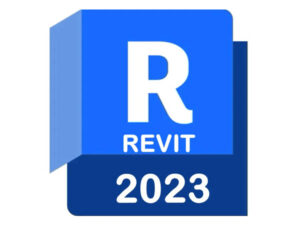In the past five years, BIM has continued its significant progress, driving widespread adoption of platforms like Autodesk Revit, which enables architecture, engineering, and construction (AEC) teams to collaborate in real time and efficiently manage all stages of a project.
Revit, Autodesk’s leading software for BIM modeling, has continuously integrated improvements in its versions from 2018 to 2024, expanding its capabilities for increasingly sophisticated collaboration, precision, and visualization.
Key Improvements in Revit Versions 2018 to 2024
- Revit 2018: Enhancements in editing complex walls, 3D reinforcement, and new graphic filters.
- Revit 2019: Support for perspective views and a new rendering engine.
- Revit 2020: Introduction of the “Path of Travel” tool and improvements in MEP systems analysis.
- Revit 2021: New cloud collaboration tools and advanced view customization.
- Revit 2022: Improved parametric modeling and advanced phase control tools.
- Revit 2023: Enhanced interoperability and compatibility with Enscape for visualization.
- Revit 2024: Optimization of collaborative BIM workflows and improved review tools.
New Feature Details
- Revit 2018:
This version introduced important optimizations for editing complex walls, allowing users to make structural modifications quickly and precisely. It also added a 3D reinforcement feature, aiding projects that require precision in reinforced concrete structures. Additionally, Revit 2018’s graphic filters improved visual clarity and project view customization.

- Revit 2019:
In 2019, Autodesk improved the visual interface and support for perspective views, providing designers with a smoother navigation experience within models. The new rendering engine also allowed users to achieve higher-quality renders without impacting overall software performance.

- Revit 2020:
A standout feature in this version was the “Path of Travel” tool, which automatically calculates routes within the model, useful for evacuation design and space optimization. Improvements in MEP (Mechanical, Electrical, Plumbing) systems analysis also made working on complex systems easier by enhancing interference detection and load calculation accuracy. - Revit 2021:
Revit 2021 featured essential cloud collaboration tools for projects with remote teams. Advanced view customization provided greater control over model visualization, enabling users to adapt their workspace to the specific needs of each user or project. - Revit 2022:
This version enhanced parametric modeling, increasing flexibility in designing architectural elements. Phase control tools made project planning and management easier, allowing teams to accurately manage the different stages of a construction project. - Revit 2023:
With a strong focus on interoperability, Revit 2023 included significant improvements in compatibility with Enscape, facilitating the creation of high-quality, realistic visualizations directly from the BIM model. This integration was particularly useful for architects and engineers looking to review and share their projects in an attractive and easily interpretable visual format.

- Revit 2024: The latest version optimized collaborative BIM workflows, enabling faster and more efficient synchronization among teams. Enhanced review and markup tools facilitate feedback and change tracking, which are essential during the development and construction phases. These updates make Revit 2024 an even more powerful tool for managing complex collaborative projects.
If you’re interested in implementing a BIM solution in your company, project, or even for building management, don’t hesitate to contact Acero Estudio. We specialize in BIM consulting and have a team of experts in Revit.
Let’s talk, find points of support, and consolidate your ideas. We’re at your service.



